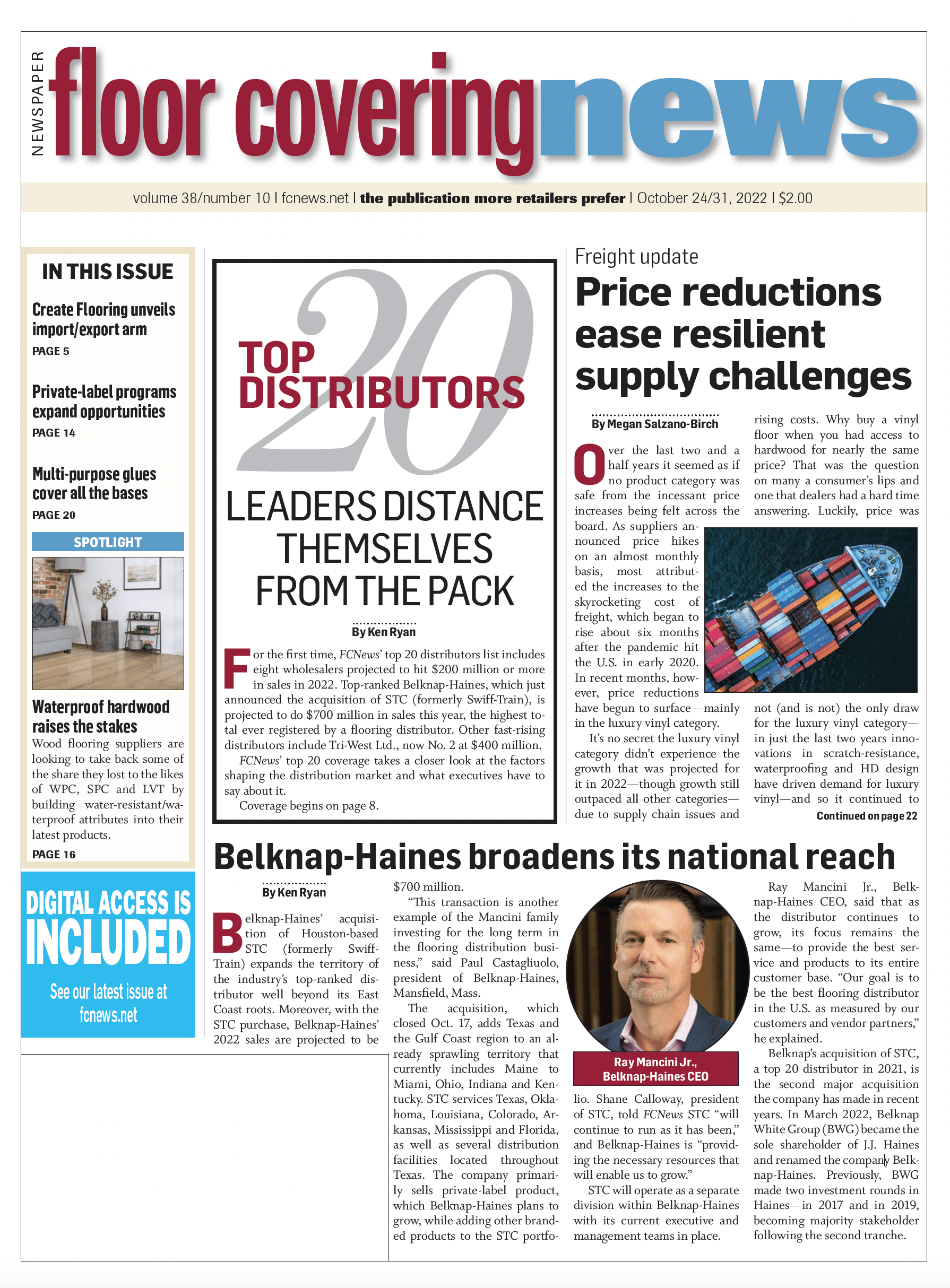 We spend a lot of time talking about technology in this industry. Programs like Mohawk’s Omnify, Broadlume’s full suite of services, Roomvo’s high-tech room viewer are just three that immediately come to mind. These platforms help facilitate operations and increase profitability for the retailer or enhance the experience for the customer.
We spend a lot of time talking about technology in this industry. Programs like Mohawk’s Omnify, Broadlume’s full suite of services, Roomvo’s high-tech room viewer are just three that immediately come to mind. These platforms help facilitate operations and increase profitability for the retailer or enhance the experience for the customer.
But not all technology is necessarily beneficial technology. Here’s an example: The art of ordering food or beverages at the airport. What do you think it the most efficient and easy way to order coffee? Get on line, tell the person at the cash register what you want in clear detail, pay, he or she makes the coffee exactly (we hope) to your specifications and you are on you way. Simple transaction, yes?
Apparently not. I’m assuming some graduate of the ridiculous Six Sigma program (yes, the same Six Sigma that basically began the destruction of Armstrong Flooring), decided that it was more efficient to order coffee and food first from an iPad (if that wasn’t confusing and inefficient enough) but now from your iPhone. No wonder Apple stock continues to soar. Apple soars and it’s exceptionally challenging to get a cup of coffee at the airport.
Let me tell you a little story: Last week I was traveling to Atlanta for a customer appreciation event organized by one of our partners. I arrived at the airport an hour before my flight. Went through security without too much tumult. (I strongly recommend Clear and PreCheck, by the way.) I approached a Starbucks, and as per usual the line was longer than a city block. No worries. Starbucks coffee is as overrated as the Yankees in a playoff series. Plus, I knew there were other establishments within a short stroll that served coffee. So I thought.
My first stop was a restaurant called something Trattoria with a big sign that read, “We serve breakfast.” Perfect. “May I help you?” “Large coffee, please.” “We don’t serve coffee.” Lesson learned: Coffee is not breakfast.
I proceed down the escalator as I get a little closer to my gate. I know there are a couple other places along the journey. First one I am met by a cash register and an iPad with no human in sight. After a couple minutes, I flag one down.
“Large coffee to go, please.”
“I’m sorry, sir. No coffee to go. Only dine-in.”
“What about that coffee you’re drinking (from a to-go coffee cup?)”
“This is mine.”
Right next door I see a bar with people sitting at it. Easting breakfast. Drinking coffee. Paydirt. I walk up to the bartender (remarkably still keeping my composure) and utter the same line I have repeated more times in the last five minutes than I had in the previous month: “Large coffee to go, please.”
“I’m sorry, sir. You need to order from your phone and use this QR code.”
This from a woman who was standing next to an exceptionally large coffee machine.
“Can’t you just give me a cup of coffee? Here’s 5 bucks.”
“I’m sorry sir, you need to scan this QR code on your phone.”
Whatever. I scan the QR code and I can’t find anything that resembles an opportunity to order coffee. But I could order something called Shakshuka, which is some sort of weird egg dish in a spicy tomato sauce. By now I am irate. “How the hell do you order coffee?”
“Well, first you need to select the restaurant.” Select the restaurant? I’m standing here at THIS restaurant. I don’t even know what this restaurant is called. It’s the restaurant with people sitting at the bar eating breakfast and drinking coffee. Which apparently was not ordered through a human being.
This so-called technology is a step back from the Horn & Hardart automats that my parents took me to when I was 7. (For those too young to remember, an automat was a fast food restaurant where simple foods and drinks were served by vending machines. Put your coins in, grab your food. Simple.)
As I am scrolling through my phone, searching for a way to order coffee, I get a notification on my screen: “Your zone is now boarding.”
You can’t make this stuff up.

